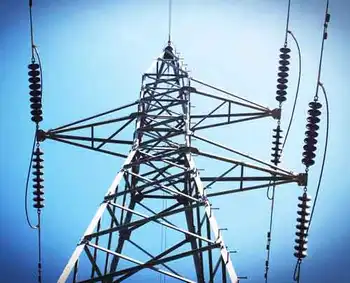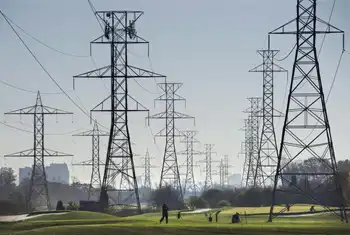Octopus Energy Makes Inroads into US Renewables

Arc Flash Training CSA Z462 - Electrical Safety Essentials
Our customized live online or in‑person group training can be delivered to your staff at your location.

- Live Online
- 6 hours Instructor-led
- Group Training Available
Octopus Energy US Renewables Investment signals expansion into the US clean energy market, partnering with CIP for solar and battery storage projects to decarbonize the grid, boost resilience, and scale smart grid innovation nationwide.
Key Points
Octopus Energy's first US stake in solar and battery storage with CIP to expand clean power and grid resilience.
✅ Partnership with Copenhagen Infrastructure Partners
✅ Portfolio of US solar and battery storage assets
✅ Supports decarbonization, jobs, and grid modernization
Octopus Energy, a UK-based renewable energy provider known for its innovative approach to clean energy solutions and the rapid UK offshore wind growth shaping its home market, has announced its first investment in the US renewable energy market. This strategic move marks a significant milestone in Octopus Energy's expansion into international markets and underscores its commitment to accelerating the transition towards sustainable energy practices globally.
Investment Details
Octopus Energy has partnered with Copenhagen Infrastructure Partners (CIP) to acquire a stake in a portfolio of solar and battery storage projects located across the United States. This investment reflects Octopus Energy's strategy to diversify its renewable energy portfolio and capitalize on opportunities in the rapidly growing US solar-plus-storage sector, which is attracting record investment.
Strategic Expansion
By entering the US market, Octopus Energy aims to leverage its expertise in renewable energy technologies and innovative energy solutions, as companies like Omnidian expand their global reach in project services. The partnership with CIP enables Octopus Energy to participate in large-scale renewable projects that contribute to decarbonizing the US energy grid and advancing climate goals.
Commitment to Sustainability
Octopus Energy's investment aligns with its overarching commitment to sustainability and reducing carbon emissions. The portfolio of solar and battery storage projects not only enhances energy resilience but also supports local economies through job creation and infrastructure development, bolstered by new US clean energy manufacturing initiatives nationwide.
Market Opportunities
The US renewable energy market presents vast opportunities for growth, driven by favorable regulatory policies, declining technology costs, and increasing demand for clean energy solutions, with US solar and wind growth accelerating under supportive plans. Octopus Energy's entry into this market positions the company to capitalize on these opportunities and establish a foothold in North America's evolving energy landscape.
Innovation and Impact
Octopus Energy is known for its customer-centric approach and technological innovation in energy services. By integrating smart grid technologies, digital platforms, and consumer-friendly tariffs, Octopus Energy aims to empower customers to participate in the energy transition actively.
Future Prospects
Looking ahead, Octopus Energy plans to expand its presence in the US market and explore additional opportunities in renewable energy development and energy storage, including surging US offshore wind potential in the coming years. The company's strategic investments and partnerships are poised to drive continued growth, innovation, and sustainability across global energy markets.
Conclusion
Octopus Energy's inaugural investment in US renewables underscores its strategic vision to lead the transition towards a sustainable energy future. By partnering with CIP and investing in solar and battery storage projects, Octopus Energy not only strengthens its position in the US market but also reinforces its commitment to advancing clean energy solutions worldwide. As the global energy landscape evolves, including trillion-dollar offshore wind outlook, Octopus Energy remains dedicated to driving positive environmental impact and delivering value to stakeholders through renewable energy innovation and investment.











